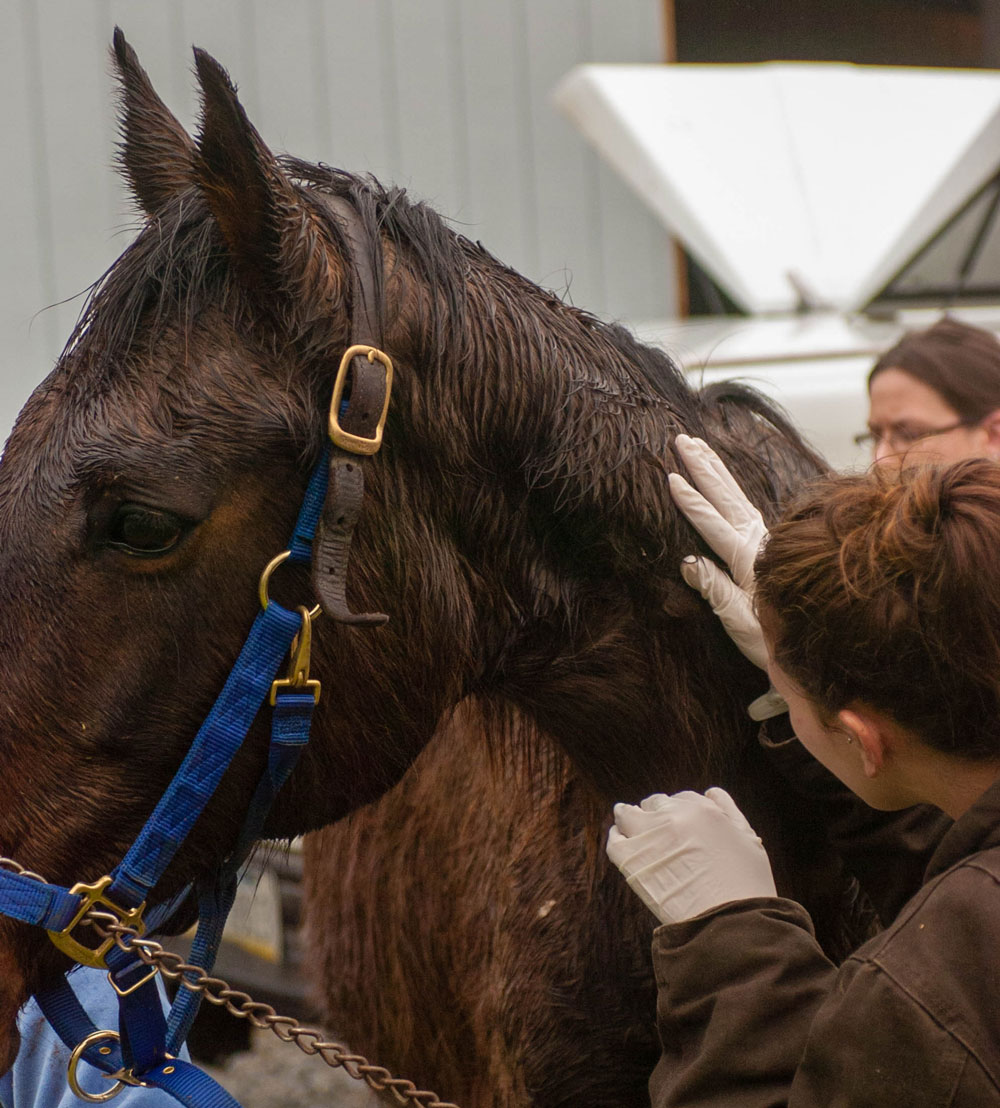
The term folliculitis simply means inflammation of the hair follicles. “When it’s caused by bacteria, most of the time this condition is caused by a Staphylococcus species of bacteria—sometimes Staphylococcus aureus and sometimes S. pseudintermedius. On rare occasions it may be due to Dermatophilus but this is very unusual,” said Stephen D. White, DVM, DACVD, Professor and Chief of Service, Dermatology, School of Veterinary Medicine University of California, Davis.
To the horse owner, this infection often looks like what is commonly called ringworm, because it tends to be circular in appearance. “The hair follicle becomes infected and the hair shaft falls out, and then the ones next to it become infected and the area of hairlessness becomes a little larger, causing a circular area of hair loss. I think bacterial folliculitis is under-diagnosed, and ringworm (caused by a fungus) is often over-diagnosed because these two conditions look so much alike,” he explained.
“In many cases, if it isn’t covering the whole animal and is located in just one or two areas, bacterial folliculitis can be managed with any shampoo that contains a combination of chlorhexidine and miconazole,” he said. “There are a number of products that contain both of those components at 2% or a little higher. These two medications are synergistic and work well together.”
This treatment is usually sufficient to get rid of folliculitis in small areas. “If it’s a horse that just has the infection in one area, a topical ointment also works very well,” White added. “The medication that I like is Mupirocin, which is used to treat certain skin infections. Some people use Neosporin, but I think Mupirocin works better. If the horse has very many wide circles of hair loss, however, a fungal culture should be done, just to make sure it’s not some type of ringworm. If it’s not fungal, use of TMS (trimethoprim sulfa) combinations usually work well.
“Your veterinarian should be involved in diagnosing the condition and recommending/prescribing the appropriate treatment,” White advised. “You want to know what you are actually dealing with and the best way to treat it.”


